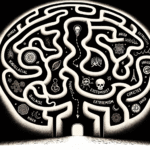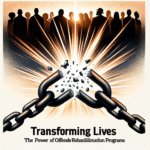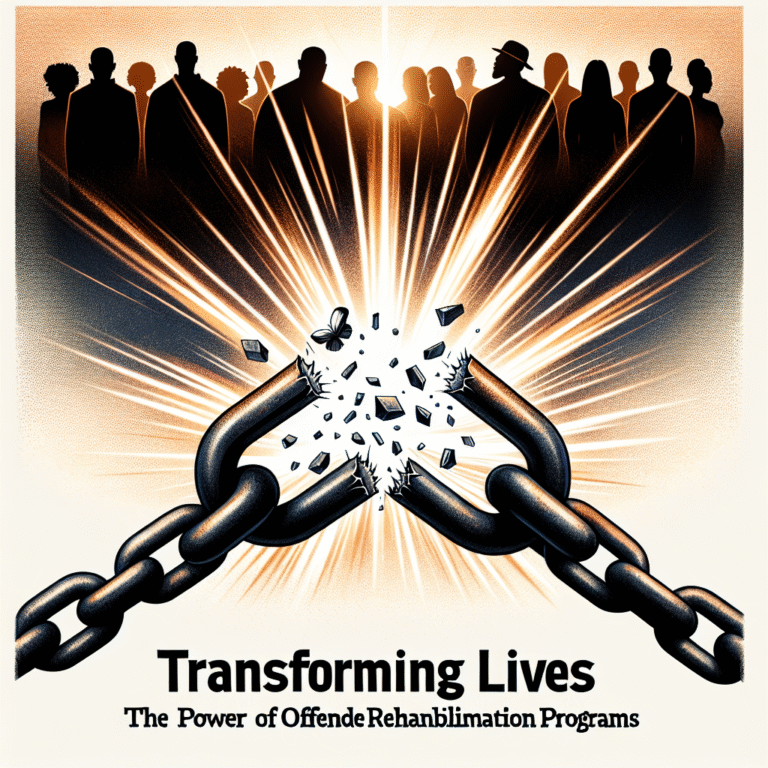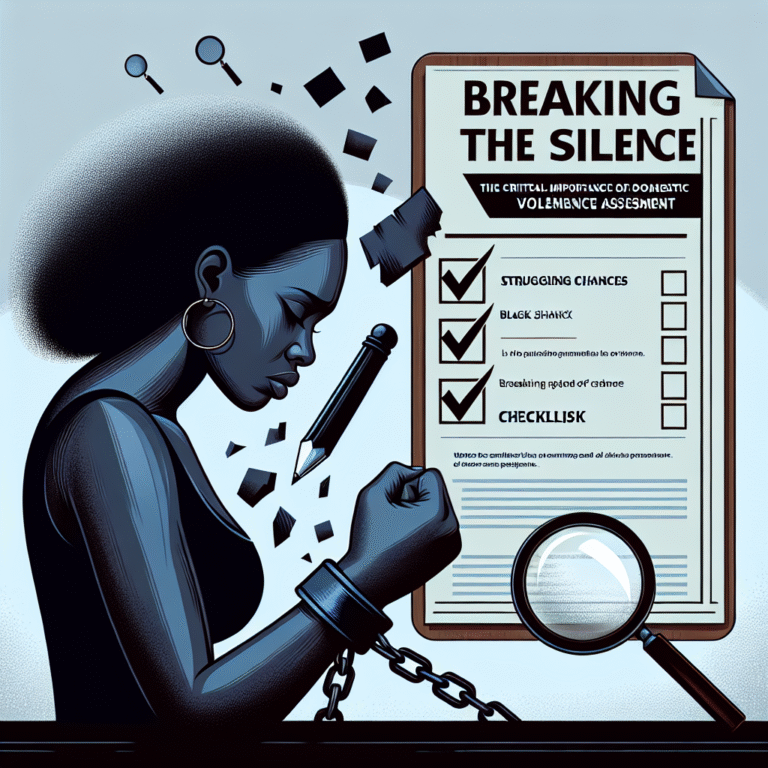
Introduction
In an age defined by rapid technological advancement and widespread connectivity, understanding the pathways of radicalization has never been more critical. From social media’s ability to spread extremist ideologies, to individuals feeling alienated in a fast-paced world, the warning signs of radicalization are often subtle and easily overlooked. However, ignoring these signs can lead to severe consequences. This comprehensive guide delves deep into the complexities of radicalization processes and explores effective assessment strategies that can help communities transition from mere identification of warning signs to actionable solutions. Join us on this journey from warning signs to solutions: effective radicalization assessments in today’s society.
Understanding Radicalization: The Landscape
What is Radicalization?
Radicalization is the process through which a person or group comes to adopt extremist beliefs, potentially leading to violent actions. Understanding this process is essential in developing effective radicalization assessments. Various factors contribute to radicalization, including social, psychological, and environmental influences.
The Psychological Perspective
Psychologists often identify a range of traits common among individuals who become radicalized. These can include feelings of isolation, profound ideological conviction, a sense of injustice, or seeking belonging. Recognizing these traits is crucial for effective assessment.
Social and Environmental Factors
Social networks play a vital role in the radicalization process. Individuals often become radicalized within groups that validate their feelings and beliefs. Additionally, factors like socio-economic status, community engagement, and exposure to extremist ideology can significantly impact the process.
Warning Signs: Spotting the Red Flags
Behavioral Changes
One of the most significant warning signs of radicalization is a noticeable shift in behavior. This may manifest as an increased interest in extremist ideologies, withdrawal from family and friends, or a drastic change in lifestyle.
Table 1: Common Behavioral Changes Indicative of Radicalization
| Warning Sign | Description |
|---|---|
| Increased Secrecy | Individuals become secretive about their activities and online presence. |
| Isolation | Withdrawal from family and friends, and community engagements. |
| Ideological Zeal | Sudden interest in extremist literature or propaganda. |
Online Presence
Today, social media serves as a breeding ground for radical thoughts. Monitoring an individual’s online activity for exposure to extremist content can provide vital insights into their potential for radicalization.
Case Study: The Role of Social Media in Radicalization
In 2017, a study from the Institute for Strategic Dialogue highlighted how individuals in Europe were increasingly targeted by ISIS propaganda on social media platforms. The study concluded that understanding an individual’s online interactions is critical to assessing their risk of radicalization.
Analysis: This case study illustrates the potent role social media plays in radicalization, underscoring the necessity for effective monitoring and intervention strategies in radicalization assessments.
Solutions: Assessing and Preventing Radicalization
Implementing Comprehensive Assessments
A proactive approach to radicalization assessments can not only identify individuals at risk but also help prevent the escalation of extremist beliefs. Effective assessment strategies involve a combination of tools, including:
- Surveys and Questionnaires: These can help gauge individuals’ attitudes and beliefs.
- Interviews: Conducting one-on-one discussions offers deeper insights into the individual’s mindset.
- Community Engagement: Engaging with community leaders can provide an understanding of local dynamics and potential hotspots for radicalization.
Collaboration with NGOs and Local Authorities
Collaboration between various stakeholders, including NGOs, community groups, and local law enforcement, is crucial. These organizations can pool resources and expertise to create effective prevention programs.
Case Study: The UK’s Channel Program
The UK’s Channel Program integrates government bodies with community organizations to identify individuals at risk and provide targeted support. It emphasizes early intervention and community collaboration, aiming to divert individuals from pathways toward radicalization.
Analysis: The Channel Program showcases how an organized community effort can serve as an effective solution, converting the identification of warning signs into proactive interventions.
Tools for Effective Assessments
Technology and Analytical Tools
Modern technology plays a pivotal role in assessing radicalization risks. Data analytics, artificial intelligence, and machine learning can help identify potential radicalization patterns before they escalate.
Table 2: Technological Tools for Radicalization Assessments
| Tool | Description |
|---|---|
| Sentiment Analysis | Can evaluate emotional tone in online discussions to spot radicalization. |
| Social Network Analysis | Helps track connections and influences online. |
| Predictive Modeling | Can identify at-risk individuals based on historical data. |
Training Programs for Law Enforcement
Training first responders and law enforcement officers on recognizing the signs of radicalization can significantly improve community safety. Regular workshops and simulations help equip them with the necessary tools to respond effectively.
Educational Approaches: Raising Awareness
Community Workshops
Dedicating resources to community education can empower individuals to recognize warning signs and respond appropriately. Workshops can cover topics such as:
- Identifying radicalization signs
- Understanding extremist ideologies
- Effective ways to engage with at-risk individuals
Case Study: Hope Not Hate Initiative
The Hope Not Hate Initiative in the UK serves as an educational program aimed at combating hate speech and radical ideologies. The project has engaged numerous communities, increasing awareness and proactive responses to radicalization.
Analysis: This case highlights how grassroots educational efforts can open dialogues and prevent the spread of radical ideologies.
Inspiration Through Literature: Case Studies
Exemplary Community Campaigns
Communities across the globe are initiating campaigns to counteract radicalization. The “Building Bridges” initiative in the United States, for instance, fosters dialogue among different ethnic and religious groups to foster mutual respect and understanding.
- Outcome: The program reduced societal tensions and increased community cohesion, providing a model for others seeking to combat radicalization.
The Role of Media in Shaping Narratives
Media plays an integral role in shaping public perceptions. Engaging narratives that promote tolerance and understanding can mitigate feelings of alienation, reducing susceptibility to radicalization.
Case Study: Counter-Narrative Campaigns
Many organizations, such as the Institute for Strategic Dialogue, collaborate with tech companies to distribute counter-narratives against extremist content online. These campaigns aim to saturate the digital landscape with messages advocating for peace and inclusivity, effectively drowning out radical messages.
Analysis: This cutting-edge approach uses technology to turn the tide against radicalization, demonstrating the innovative solutions that can arise from community and corporate collaboration.
Conclusion
The journey from warning signs to solutions: effective radicalization assessments in today’s society is a multifaceted endeavor that requires collaboration, innovation, and dedication. By recognizing warning signs early and implementing comprehensive strategies, we can curb the tides of radicalization and foster a more inclusive society.
As individuals, communities, and organizations, we have the power to make a difference. Engage in dialogue, invest in education, and work together to build resilient communities. Let this moment serve as a call to action—a call to recognize the warning signs and take decisive steps toward effective solutions.
FAQs
1. What are the primary warning signs of radicalization?
Common warning signs include drastic behavioral changes, increased secrecy, withdrawal from social circles, and engagement with extremist content online.
2. How can technology contribute to radicalization assessments?
Technology can assist through tools like sentiment analysis and predictive modeling to identify patterns that signify potential radicalization.
3. What role do communities play in preventing radicalization?
Communities are essential in identifying at-risk individuals and facilitating educational programs and discussions that promote understanding and cohesion.
4. How can families effectively respond to warning signs within their households?
Open communication, engaging in discussions about values, and seeking support from community resources can significantly help at-risk individuals within families.
5. Are there proven strategies for addressing radicalization in schools?
Yes, incorporating educational programs that focus on critical thinking, tolerance, and respect can help equip students with the tools to understand and reject radical ideologies.
By utilizing insights from diverse sectors and harnessing the strength of community efforts, we can transform society’s approach to radicalization, turning awareness into action for a safer future.

















